PipingProjects.eu is one of the leading Pipe Bend Manufacturer in Europe. We specialize in manufacturing high-quality Pipe Bends that meets the various application and uses of customers. As a trusted Pipe Bend Supplier in Europe we supply top-notch quality Pipe Bend to various cities in Europe. Our High-quality Pipe Bend ungeroes various testing such as Tensile Testing, Chemical Composition Analysis, Hydrostatic Pressure Testing and others so that our clients recieve premium quality Pipe Bends .
A pipe bend is a tool for changing the direction of fluid flow and producing an offset in the flow. The significance of pipe bends lies in their ability to facilitate the movement of fluid in various directions, a necessity in modern pipelines. The types of pipeline bends are fashioned through hot and cold rolling procedures, including compression bending, rotary draw bending, roll bending, and mandrel bending. As a top Pipe Bend Supplier in Europe, we offer a range of sizes to meet project requirements. It is imperative to identify the appropriate use of the Bend Dn150 for a successful operating system.
The Steel Pipe Bend is a specialized component that is primarily intended to modify the flow characteristics within a pipeline. Unlike other pipe fittings, these bends do not necessitate welding and exhibit lower friction, resulting in a smoother flow. In complex piping systems, a 50mm Pipe Bend can effectively reduce routing pressure changes. Furthermore, these bends are straightforward to install and connect. The Schedule 40 Pipe Bends are highly flexible and exhibit exceptional thermal expansion properties, making them an excellent choice for various applications.

Does this product seem useful to you?
Reach out to us now for quick support.
Trusted
Supplier
Genuine
Product
Easy
purchase
Pipe Bend Specification Chart
| Product | Pipe Bend |
|---|---|
| Size | 6 inches (150 mm) |
| Radius | 3D (3 times the nominal diameter) |
| Standard | JIS, AISI, ASME, ASTM, AMS, GB, DIN, EN, GOST |
| Type: | Long Radius Elbow, Short Radius Elbow, U-Bend, Miter Bend, Twisted Pair Bend |
| Manufacturer: | POSCO, Aperam, Jindal Stainless, DKC Korea, Thyssenkrup, Baosteel, TISCO, Arcelor Mittal, VDM, Nippon Metal, Outokumpu |
| Package | Shrink-wrapped ,Carton boxes,Wooden pallets,Wooden boxes ,Wooden crates Etc. required. |
| Grade | |
| Stainless Steel | 200 Series - 201, 202, 205.
300 Series 301, 302, 303, 304, 304L, 308, 309, 309S, 310, 310S, 314, 316, 316L, 316TI, 317, 317L, 321, 347. 400 Series 405, 409, 429, 430, 430F, 430FSe, 434, 436, 442, 446, 403, 410, 414,416, 416Se, 420,420F, 422, 431, 440A, 440B, 440C. 500 Series - 501, 502. 600 Series - 630 (17-4 PH). |
| Carbon Steel | ASTM A106 Gr. A , B & C API 5L Gr. A / B, X42 ,X52 ,X60 ASTM A 53 Gr. A/B |
| Titanium | Titanium 6-4, Gr 1, Gr 2, Gr 3, Gr 4, Gr 5, Gr 7, Gr 9, 5-2.5, 6-2-4-2, 6-4 ELI, 6-6-2. |
| Hastelloy | C22, C276, X, B-2. |
| Monel | 400, K500. |
| Nickel Alloy | Nickel 200 Nickel 201, Alloy 20, Alloy 286, Alloy 218 (Nitronic 60), Nitronic 50 (XM-19). |
| Cupro Nickel | Cu 90-10 (C70600,CW352H), Cu 70-30 (C71500, CW354H). |
| Inconel | 601, 625, 660A, 718, X-750, 825, 925, 608. |
| Duplex / Super Duplex | D S31803, D S32205, SD S32750, SD S32760, SD S32950. |
| Chromium Molybdenum Steel | A387 Gr 2, A387 Gr 12, A387 Gr 11, A387 Gr 22, A387 Gr 22L, A387 Gr 7, A387 Gr 21, A387 Gr 21L, A387 Gr 9, A387 Gr 91. |
| Nichrome Alloy | CrNi 20/80. |
| Copper | ASTM B1, ASTM B2, ASTM B3, ASTM B152, ASTM B124, ASTM B133. |
| Brass | Alloy 260, Alloy 272, Alloy 330, Alloy 353, Alloy 360, Alloy C48200 - C48500, Alloy 464. |
| Bronze | Alloy 954, Alloy 933. |
| Case Hardening Steels | 10C4, 15C8, 15Cr3, 16Mn5Cr4, 20MnCr5, 15Ni5Cr4Mo1, 15Ni5Cr4Mo2, 20Ni7Mo2, 20NiCrMo2, 14CrNi6. |
| En Series | En8, En9, En19, En24, En30B, En31, En36, En45, En47, En48. |
| Mild Steel | Sae 4118, Sae 4120, Sae 4120, Sae 4130, Sae 4135, Sae 4137, Sae 4140, Sae 4142, Sae 4145, Sae 4147, Sae 4150, Sae 4161, Sae 8620. |
Why Use Bent Pipes?
The process of pipe bending enables complex piping systems to route materials while minimizing pressure changes. Due to the fact that most bent pipes do not modify the ends of the piping, they can be easily integrated into processing systems using conventional welding processes, flanges, or other connection methods.
Furthermore, the extensive range of pipe bend sizes and materials renders them appropriate for routing a diverse array of substances, including hot or caustic liquids, as well as maintaining pressure and movement in high viscosity liquids or those containing suspended solids. This is exemplified in the case of Oil Sands slurry lines, which contain a high concentration of silica sand.
What is The Pipe Bending Process?
The SS Pipe Bend machine uses a rotary draw to bend pipes. The pipes can be heated or not depending on their thickness and diameter. Mandrels are put inside the pipes and then they are bent to make the Stainless Pipe Bend. The machine must make sure that the pipe stays the same thickness and diameter throughout the bend. The mandrels stay inside the pipe to keep the diameter from getting smaller. But, the outside of the pipe may have some differences in thickness.
Production Process of Pipe Bend
What Makes Us The Premier Manufacturer And Supplier Of Pipe Bend In Europe?
We adhere to rigorous quality control protocols and standards to ensure superior surface and dimensional tolerances in the production of Pipe Bend. Our company holds ASME Quality and ISO Certifications, positioning us as a prominent provider of Pipe Bend solutions made from carbon steel, alloy steel, and stainless steel on a worldwide basis. In addition to manufacturing top-tier stainless steel Pipe Bend, we are authorized distributors of ISMT and Jindal, enabling us to supply carbon steel and alloy steel Pipe Bend of exceptional quality.
Standard Pipe Bend Radius Chart
| Standard pipes | Spec | . Bauart 5 | 2,5D | |
|---|---|---|---|---|
| DN | Diameter [ØD] | CLR | CLR | CLR |
| 20 | 26,9 | 110 | 67 | |
| 25 | 33,7 | 110 | 84 | |
| 32 | 42,4 | 110 | 106 | |
| 40 | 48,3 | 110 | 212 | |
| 50 | 60,3 | 125 | 151 | |
| 65 | 76,1 | 175 | 190 | |
| 80 | 88,9 | 205 | 222 | |
| 100 | 114,3 | 270 | 286 | |
| 125 | 139,7 | 330 | 350 | |
| 150 | 168,3 | 390 | 421 | |
| 200 | 219,1 | 510 | ||
| 250 | 273 | 650 | ||
| 300 | 323,9 | 775 | ||
| 350 | 355,6 | 850 | ||
| 400 | 406,4 | 970 | ||
| 500 | 508 | 1245 | ||
Common Pipe Bending Methods
It is a process whereby a pipe or tube is bent through the use of a combination of dies and other components that operate in a rotary fashion. This rotary action draws the pipe or tube forward, resulting in the desired bend. Additionally, mandrels may be employed in the process of Rotary Draw Bending.
It involves the insertion of a mandrel into a tube or pipe during the bending process, particularly when working with materials possessing thinner walls. This technique serves to prevent the occurrence of defects in the bend, such as rippling, flattening, or collapse.
The process of bending a pipe or tube involves the utilization of a stationary die, while a counter die is employed to bend the material around the stationary die.
This technique is employed in situations where there is a need for bends or curves with a substantial radius. It involves the passage of a pipe or tube through a set of three rollers arranged in a pyramid configuration, thereby achieving the desired curvature.
Although there exist slight variations in different hot pipe bending techniques, the majority of them are categorized as induction bending. This process involves the precise heating of the pipe through an induction heating coil prior to the application of pressure to achieve the desired bend. Unlike cold bending methods, induction bending requires significantly less physical force and can produce bends of comparable or superior quality without the use of filler materials, mandrils, or other additions to prevent distortion. While it reduces diameter reduction at the bend site, induction bending results in some changes in pipe thickness. Typically, the intrados, or inner section of the bend, will become thicker, while the extrados, or outer section of the bend, will become thinner. This technique is primarily utilized in large diameter piping and tubing and long radius bends, but it also has applications in smaller piping diameters and short radius bends.
PipingProjects.eu is a leading Pipe Bend Manufacturer in Europe. These are a few examples of Pipe Bends you can find at Piping Projects in Europe.
What is the Method for Determining the Radius of a 90-degree Bend?
The bends' angles commonly measure 90° and may possess either a short or long radius. The Stainless Steel Long Radius Bends are seldom encountered. The internal radius is determined by the formula [(Dw/2/2) + Dp2]/Dp x 2, where Dp represents the depth of penetration, and Dw denotes half the width of the die. The Stainless Steel Short Radius Bends are the most widespread and utilize formulas to estimate the radius. Nevertheless, the actual radii may differ in practical applications.
A Guide to Producing Long Radius Bends
The Low Alloy Steel Welded Pipe Bend undergoes manufacturing through casting or bending within a die or roller setup, with cold drawing necessary for smaller diameter pipes. Conversely, High Alloy Steel Short Radius Bends can be cold-formed, while longer radius bends typically involve a process with a mandrel, preheating, and rolling over rotary draws. As a leading Pipe Bend Supplier in Europe, we ensure precision in these processes to deliver high-quality and customized solutions for our diverse clientele.
Pipe Bend Used in Industries

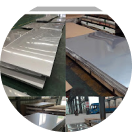
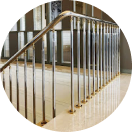
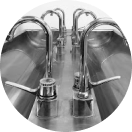
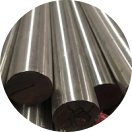
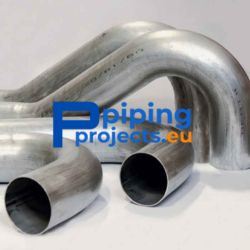
Pipe Bend Manufacturer in Europe
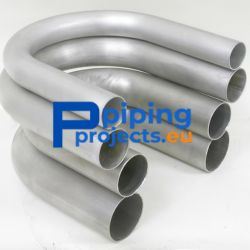
Pipe Bend Supplier in Europe
